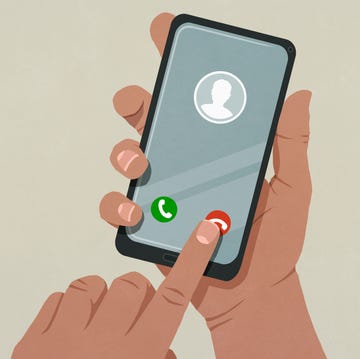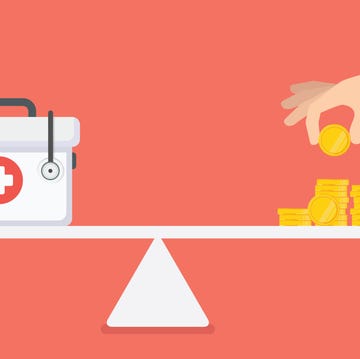Citizens Advice estimate that unused subscriptions cost consumers £688 million in the last year. Whether it’s Netflix, Amazon Prime, a dating app or snacks by post, signing up to a subscription couldn’t be easier, but when it comes to cancelling, it’s another story!
Tempting as it is just to stop the payment at your bank or credit card, this isn’t the best solution as it won’t always stop the subscription immediately, and you may be liable for additional charges.
Accidental subscriptions
Research, also, show that more than 26% of us have accidentally taken out a subscription in the last 12 months — everything from fitness apps and food delivery services, to repeat pet food subscriptions. It’s often because something’s auto-renewed without our knowledge (40%) or we took out a free trial and forgot to cancel later (39%). Worryingly, almost one in four (24%) people who have ended up in an accidental subscription thought they were making a one-off purchase.
What to read next
How do subscriptions work?
Signing up for any new subscription is an exciting time, full of expectation and promise but remember keep your business head on, and to check the cancellation policy because there may come a time when this subscription doesn't work for you and you need to know how to press the eject button!
Subscriptions can work in different ways and this will dictate how you cancel them. With some, like gym memberships, you may sign up for a minimum period of six months or a year, but still need to give notice or the contract may ‘auto renew’. Or you may sign up on a rolling contract basis, like many streaming services like Netflix or Apple TV. You have monthly ‘rolling contracts’, which means you’ll typically need to give 30-days' notice or risk shelling out ad infinitum.
Subscription ‘traps’ to close in 2026
Although the Digital Markets, Competition and Consumers Act (DMCC) has been passed, it’s not in force yet. The new consumer rights for subscription contracts aren’t expected to be in force until 2026.
This includes new rights for:
· What information a consumer gets before signing up
· Reminder notices of upcoming renewal payments
· Straightforward cancellation process
· 14 day cooling off period for the initial subscription and each renewal period
There will be some exclusions to the new rules - for example, contracts for utilities, insurance and financial services, medical prescriptions, childcare.
But in a nutshell, says Matthew Cotton, mediator and solicitor with Hedges Law, it will blacklist some commercial practices which are considered automatically unfair such as fake reviews, subscription traps, pressure selling, secondary ticketing, drip pricing, hidden fees.
"There will be a new regime for subscription contracts to ensure that consumers are always aware of the terms through pre-contract information, a cooling off period enabling a full refund, reminders of renewals and termination rights, and easier termination rights," says Matthew.
In the event of a breach of these new rules, the CMA be able to impose a significant maximum penalty of 10% of the business' global annual turnover, or £300,000 (whichever is higher).
How do I cancel subscriptions right now?
Cooling off periods
If you signed up to the subscription online, over the phone or by mail order, you usually get a 14-day cooling off period, under the Consumer Contracts (Information, Cancellation and Additional Payments) Regulations. You can cancel if you’ve changed your mind – you don’t have to give a reason.
When the new legislation comes in, you'll benefit from a similar right to cancel at the start of any renewal period. For instance, when any discounted or free trial period ends, when the subscription comes up for auto renewal after a year or you are on a rolling contract where the contract continues beyond the end of the 12-month period
Ease of cancelling
With all subscriptions, once you’re beyond any cooling-off period, you should check your contract or the company website for cancellation terms. It may be as simple as logging, going to account settings, then payments/subscription and selecting cancel. But full details of how to cancel should be included in the website’s FAQs.
Once your subscription is cancelled, you can cancel future payments like direct debits with your bank. It's always worth keeping a screenshot of cancellation confirmations or emails, in case there’s any problem.
Unfair terms
At the moment, you have rights under the Consumer Rights Act if there are unfair terms in a contract, including subscriptions - it doesn’t matter how long the contract is for. An example of an unfair term might be an excessively long notice period to cancel. Because the new legislation isn’t in force yet, the new rules on auto-renewals for subscriptions don’t apply. There may be a 30-day notice period on rolling contracts, but if a notice period is excessively long, a consumer might not be bound by it as this might be an unfair term in the contract, says Citizens Advice.
How do I find all my subscriptions?
If you can’t remember what you’ve signed up to, check if your banking app has a subscription management tool or log into your bank account for a list of direct debits and standing orders.
A ‘Continuous Payment Authority’ (CPA) can be harder to track down. This is when you make payment by giving a company the long number from your debit or credit card.
Some banks may list these under a ‘subscription’ list, but others may not have this option. In this instance, you may need to trawl through twelve months of bank or credit card statements checking for payments that may only come out once a year.
If you’re juggling multiple subscriptions, you could download a free subscription management app like LittleBirdie or ScribePay. These link to your bank account and payment cards, automatically find subscriptions and allow you to cancel ones you don’t use.
How do I cancel a subscription that won't let me?
If your requests to cancel are ignored, (and you’re giving the relevant notice), your bank can cancel direct debits and CPAs, to stop future payments.
Ideally, you should contact the subscription company first to check you’re beyond any minimum contract and giving the correct notice, so you don’t incur penalty fees. However, banks can, and must, cancel CPAs when asked under rules set by the Financial Conduct Authority.
If you’re struggling to pay, some companies may allow you to temporarily ‘pause’ subscriptions for a limited time.
How can I prevent subscription nightmares in the future?
*Check small print before signing up. If it’s not clear how to cancel, think twice.
*Note down when free trials end and check minimum contract and cancellation terms before signing up.
*Pay by direct debit. This makes for a much easier way to cancel than setting up a continuous payment authority. While your bank can cancel both, paying by direct debit means protection under the Direct Debit Guarantee. This means if mistakes are made, your bank will reimburse you.
*Always tell the subscription company you’re cancelling before stopping payment.
*With rolling subscriptions, like beauty boxes or delivery services, you’ll usually need to give 30-days’ notice to cancel or cancel within a certain number of days before your next payment is due.
*With broadband and mobile deals, if you are out of contract and have simply been rolled over on to a new tariff without signing up for it, you can cancel at any point without penalty.
*Check your cancellation rights
Contracts may seem watertight, but if providers don’t fulfil their side of the deal, you may be able to cancel. For instance, under new rules announced by Ofcom, from January 2025 broadband, mobile and tv firms can’t hit you with mid-contract price hikes without clearly stating exactly how much they'll rise by at the outset.















